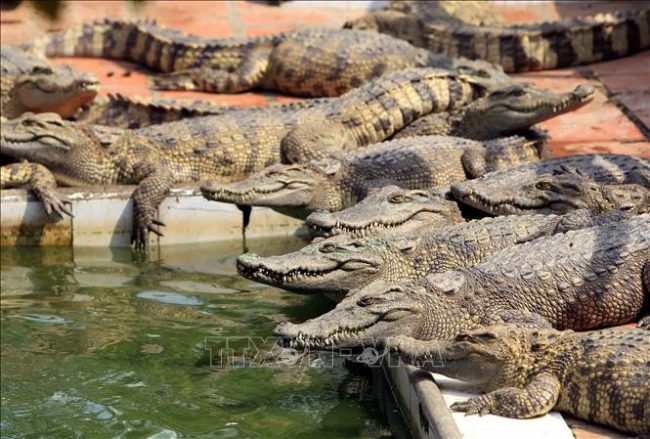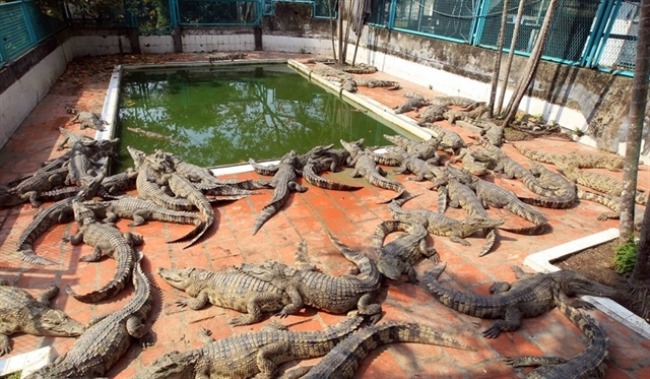A representative from PanNature suggested clearly defining the non-profit status of science and technology organizations to facilitate research, technology transfer, and application. This clarity would also enhance international collaboration and attract funding.

Thousands of wildlife farms in Viet Nam threaten biodiversity
In recent decades, along with the robust development of the economy, the demand for wildlife in Viet Nam, especially in big cities, has increased.
Aided by overlapping and inconsistent legal regulations on the management of animal origin, wildlife hunting, and trafficking activities have intensified in Viet Nam and threatened biodiversity.
In Viet Nam, wildlife farming has existed for a long time with many rare and precious animals raised for commercial purposes. Some wild animals have been bred and domesticated such as sika deer and wild boar.
According to incomplete statistics from the People and Nature Reconciliation (PanNature), a non-governmental environmental protection organization, more than 70 species of wildlife belonging to the mammal classes, birds and reptiles are being raised on farms in the country.
Some species are popular such as long-tailed macaque, freshwater crocodile, python, cobra, and turtle. Some establishments raise rare and precious mammal species of imported origin such as African white rhino and lion.
There are more than 14,000 wildlife farms in Viet Nam many of which are on an industrial scale including 10 freshwater crocodile farms with an annual production capacity of more than 120,000 animals and hundreds of python farms with the capacity of up to 200,000 animals each year. Some long-tailed monkey farms have an annual production capacity of more than 10,000 per year.
About 70 percent of wildlife farms are in the southern provinces, especially in the eastern and southwestern regions, where weather conditions are more favorable and food supply is abundant.
Wildlife products from Viet Nam are legally exported to many markets such as Italy, Spain, the UK, Russia, Japan, China, and the US. Breeding has brought an average annual income of up to USS$60 million annually in the last five years as well as created jobs for about 35,000 workers.
In central Nghe An Province, more than 2,300 establishments are breeding more than 13,500 wildlife animals.

According to the provincial Forestry Department, common wild animals are less susceptible to diseases, and the products are easily consumed, so many farming families choose to raise them. They see it as a positive transformation of livestock structure from traditional animals such as pigs, buffaloes, and cows to more “advanced” species.
Under the Investment Law, wildlife farming is a business that requires conditions to be licensed.
According to Dr. Vuong Tien Manh, deputy director of the Convention on International Trade in Endangered Species of Wild Fauna and Flora (CITES) Management Authority of Viet Nam, breeding accounts for a large proportion of Viet Nam’s agriculture. There are many reasons explaining the large scale of wildlife breeding including lifestyle, cultural characteristics, and labor structure.
However, due to high farming costs, farmers tend to mix animals of natural origin and their products into captive facilities.
Trinh Le Nguyen, Pan Nature director, said smuggling wildlife into livestock facilities was common in Viet Nam. This showed that if not strictly managed, wildlife farming would not reduce the hunting of wild animals and will put wild species at risk.
The Vietnamese Criminal Code regards wildlife trading as an extremely serious crime.
Viet Nam is a member of CITES, a convention which aims to control the international trade of endangered species of wild fauna and flora.
CITES has detailed procedures to raise wild animals and emphasises that the keeping of wild animals must not affect the survival of the species in nature.
Prime Minister Nguyen Xuan Phuc this year suspended wildlife imports and ordered the closure of illegal wildlife markets.
Luu Trung Kien, deputy director of Pu Mat National Park, Nghe An Province, said all policies or legal documents related to biodiversity in Viet Nam needed to be studied and considered thoroughly before approval. Breeding of wild animals, including common species, should be allowed only when there is clear scientific evidence that commercial farming of such species does not affect their populations in nature. Viet Nam should only allow wildlife farming for commercial purposes if there is a thorough impact assessment.
He proposed creating sustainable livelihoods for people, especially those living near forested areas to reduce the hunting, catching, and trapping of wildlife.
It was necessary to encourage communities living in buffer zones of national parks, nature reserves, and protection forests to participate in the conservation of wildlife, he said.
Source: Viet Nam News



